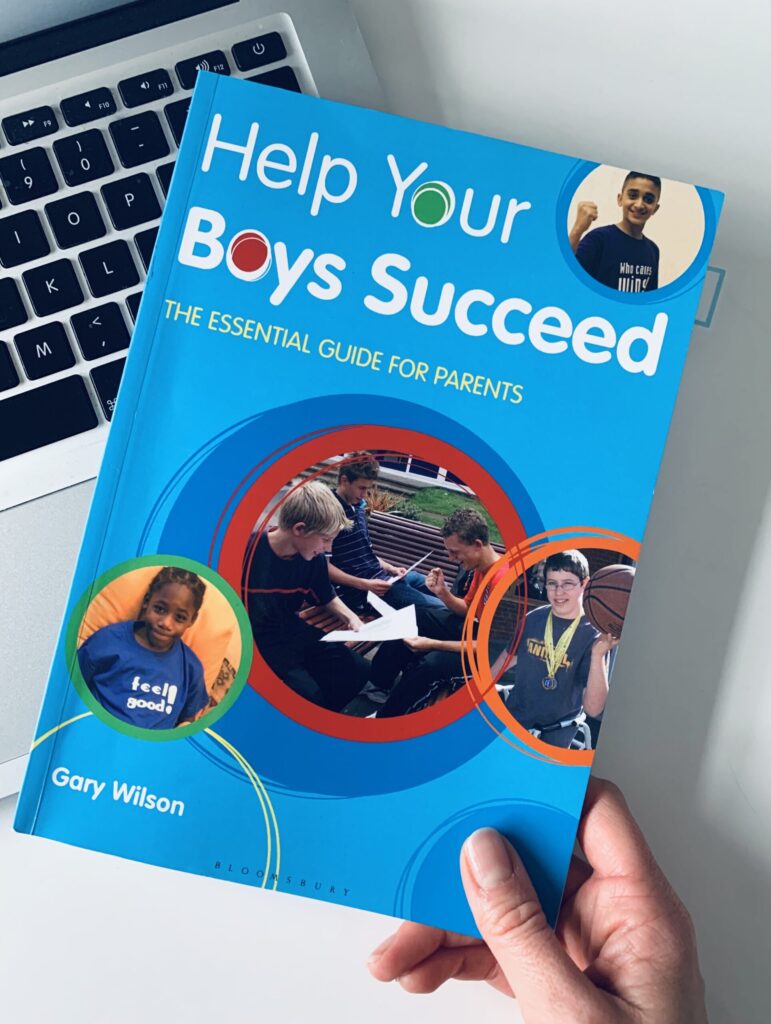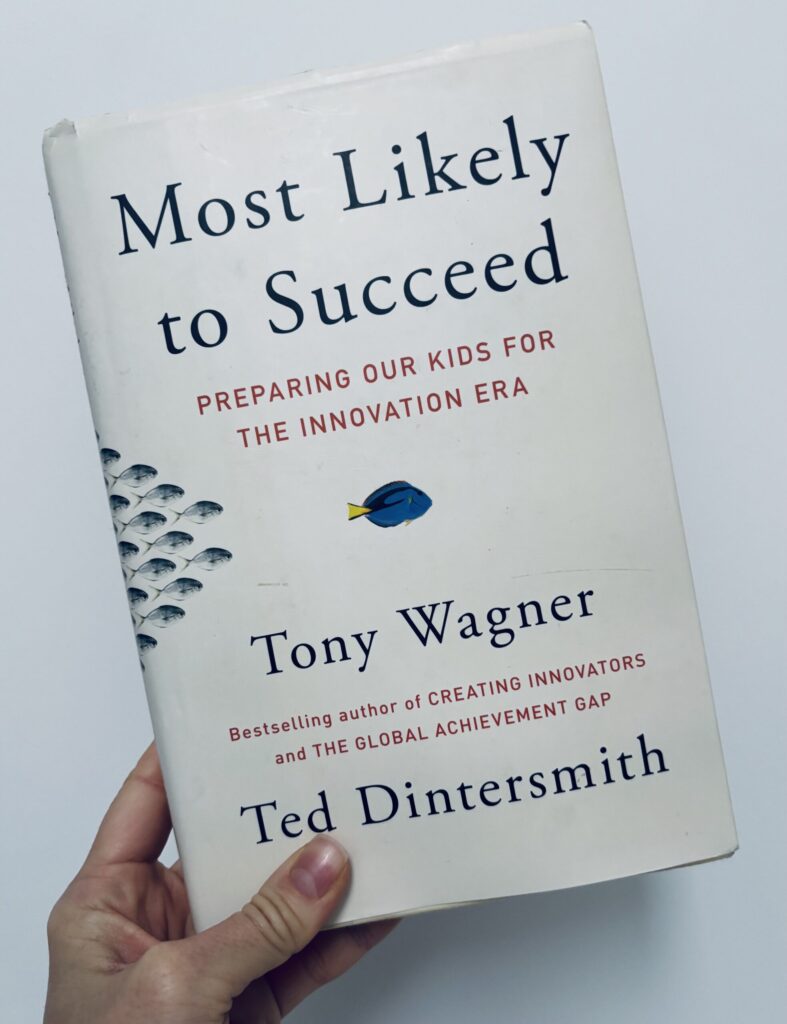 Help Your Boys Succeed. Book Summary
Help Your Boys Succeed. Book Summary
The essential guide for parents
Gary Wilson
Network Continuum Education (28 July 2008)
About The Author
Gary Wilson is one of the UK’s leading experts on raising boys’ achievement. He is a freelance education consultant, speaker, trainer, author and former teacher with 27 years of experience. Gary has advised and delivered training in over 1,000 schools and over 30 local authorities across the UK, and was Chair of the National Education Breakthrough Program on Raising Boys’ Achievement for over a decade.
About The Book
“Every year, when examination results come out, the papers are full of the news that boys are falling behind girls in terms of their achievement. Regularly the papers blame the way boys are these days – the so-called ‘laddish’ culture. Sometimes commentators blame the fact that boys are not doing so well on the lack of female teachers. Similarly they will often cite the lack of male role models in our society generally and the lack of male role models in the family as reasons for the lack of male achievement. At its most extreme, we can even sometimes hear people claiming that it’s all down to a worsening of discipline in schools. This gang are normally heard baying for a return to corporal punishment, claiming ‘That’ll sort the little devils out!’ Taken on their own, any one of the above ideas is far too simplistic, missing as they do a wide range of far more subtle causes for boys’ underperformance in school. […]
The fact is that the barriers to boys’ achievement are numerous and, to make matters even more confusing, no two boys are alike. If there was a reason why boys underachieve, and therefore, just one thing that we needed to do to set the world to rights, then schools would have already done it. The fact is that the problem is complex. This book seeks to explain the complexity of the issue and, most importantly, provide some practical ideas for you as parents to help support your son in fulfilling his potential.”
A while back, our school sent me an invite for “a special in-person event with the renowned author and expert on boys and attainment, Gary Wilson.” Excited about the prospect, I clicked on the link only to find out that all the spots had been snapped up faster than hot buns.
Being a mom of three boys, I sensed that missing out on his workshop meant I should at least delve into his books. Thus, I promptly ordered Help Your Boys Succeed.
In this book, Gary Wilson raises a crucial point: data reveals that girls consistently outperform boys in just about everything at school from the age of five onward. Drawing on his experiences and scientific insights, Mr Wilson explores the primary reasons behind this achievement gap and offers practical advice on how parents (and schools) can narrow it down.
I personally enjoyed the book and found the practical tips quite valuable. Mr. Wilson’s wisdom aligns well with the concepts presented in The Thriving Child by William Stixrud and Ned Johnson, and Mind in the Making by Ellen Galinsky.
I must admit, even though Mr Wilson bases his conclusions on the UK school environment, I believe the barriers to achievement are quite similar in most countries (except Finland – they’re setting an example for all of us!).
So, without further ado, let’s dive in.
Key Insights
14 Barriers to Boys’ Achievement
“The main point to remember though is that boys are, without doubt, as capable as girls. Don’t tell me boys can’t concentrate – have you seen a boy playing a computer game for seven hours non-stop! Don’t tell me boys don’t have energy or that they never get enthusiastic about things. Don’t tell me they are never creative or imaginative. All our boys are perfectly capable of achieving in a variety of ways. So how can we begin to bring these elements to the surface? We need to explore some of the most significant barriers to boys’ achievement and consider how we break them down.”
So, here is the point: the achievement gap doesn’t stem from boys being inherently incapable or less motivated than girls. Take Finland, for example – no performance gap there. The reasons behind boys’ underachievement are a bit tangled, but that doesn’t mean we can’t untangle them.
To help us understand what are the main factors contributing to boys’ performance and achievement at school, Mr Wilson suggests looking at 14 “barriers to achievement”.
Let’s have a sneak peek:
1. Too much pressure at pre-school:
Lots of boys aren’t quite ready, both physically and emotionally, for the whole ABCs, numbers, and writing their name drill. Mr. Wilson keeps it simple – let boys play more! Play is the best way to get them ready for school and learning.
2. Lack of independence:
According to science, there’s a strong link between independence and effective learning. Teachers often notice that boys lean a bit less towards independence than girls. Mr. Wilson’s advice? Get your boys dressing themselves, making decisions, and prepping for school solo (we’ve got a killer checklist at home – works wonders). Involve them in chores, too. It’s all in sync with the wisdom from How to Raise an Adult by Julie Lythcott-Haims and The Thriving Child by William Stixrud and Ned Johnson.
3. Boys starting school linguistically less developed:
Statistically, girls use way more language in their play than boys, like ten to thirty times more. In a nutshell, there is a global problem of parents talking less to their kids. Blame technology, but there are other culprits, like families not eating dinners together or strollers facing away from parents and such. The fix? Talk a lot! Check out this mind-blowing TED talk on why talking to your child is a game-changer:
Sing together, play, create stories, talk about books and their discoveries, eat dinner together, and encourage questions!
4. Physiological needs are not met:
All kids need good sleep, healthy, nutritious food, and physical activity. When kids feel good in their bodies, they learn better. As simple as that.
5. Negative attitudes to writing:
Boys’ fine motor skills take a little longer to develop than girls’. Piling on the pressure for them to write perfectly before they’re ready can lead to a bunch of issues. What’s the fix? Work on fine motor skills, teach him how to hold a pen correctly, and use positive reinforcement!
6. Limited interest in reading:
There are two big reasons for this – parents don’t read with kids, and boys lack a male reading role model at home (some boys might see reading as too girlish if their dads aren’t into it). Solution? Make reading a family value – have loads of books around, read together, go to the local library and encourage boys to read fiction as well as fact books.
7. Inability to plan and prepare effectively:
Lots of boys use computers just for playing video games and watching movies. Our job is to show them how to use it to supercharge their learning: search for info, size it up, and use it for their assignments. Mr Wilson also shares a few tools that boys can use to boost their learning – more on that below.
8. Peer pressure:
It seems like in the world of boys, being smart (or a geek, swot, prof, boff, and the list goes on) isn’t always the cool thing. The not-so-smart crowd might give high achievers a hard time, creating peer pressure that messes with motivation and the whole attitude toward learning and putting in the effort. That’s straight-up bullying. Our job as parents? Spot the peer pressure game and team up with the school (they usually have a bullying policy in play).
9. The laddish culture:
Mr Wilson dives into gender stereotypes and how they shape boys’ behaviour and attitude. This really got me thinking, especially with the whole “toxic masculinity” vibe spreading online. I’ll unpack this in a bit.
10. Emotional intelligence issues:
Stereotypes like “boys don’t cry,” brushing off their feelings, slapping labels – these are just some of the things messing with boys’ emotional intelligence. Mr Wilson breaks it down using Daniel Goleman’s SERIOUS model of Emotional Intelligence (self-motivation, empathy, reflection, impulse control, optimism, understanding relationships, self-awareness) to guide us on how to boost boys’ EQ.
11. A mismatch between how he is expected to work and his preferred way of working:
This pops up in Sir Ken Robinson’s books too. We all have different learning styles – visual, auditory, and kinesthetic. Our job as parents is to help our kids figure out their learning styles and teach them learning strategies that would be the most effective for them.
12. Poor reflection skills:
To learn from any experience, kids need to reflect on it first. But lots of boys are eager to jump into the next thing without looking back. Our job as parents? Push for reflection whenever we can: chat about what they’ve learned at school, challenge them to “take a hot seat” and answer questions like an expert learner, and so on.
13. Low self-esteem and limiting beliefs:
“In an assembly of over a hundred 14-year-old boys, I asked how many of them, when they left school, wanted a decent job, somewhere nice to live, a reasonable car and nice holidays – every single hand went up (even the teachers!). Then I asked how many of them thought that was likely to happen.”
Self-esteem is a complex and important topic, but here are some crucial tips for parents: nurture a growth mindset, communicate with love, help him develop competence, provide him with a sense of identity (Family Mission Statement may help) and help him on the path to purpose. Also, check out our article 10 Things Parents of Children With High Self-Esteem Do.
14. Lack of positive male role models:
at home, in school, and out in the world. Science is waving its hands, saying dads getting in on the education game can make a big difference for boys – better grades, better behaviour, less criminality, and better mental health. So, dads and granddads, jump in! Read together, talk about their school day, discuss the news of the day, go on adventures, and lend a hand with school stuff.
While the primary focus of the book is on guiding parents in unlocking their boys’ potential, Mr. Wilson wraps things up by dissecting what schools can do to boost boys’ achievement.
Now, let’s take a closer look at a couple of ideas from the book.
Give Them Learning Tools – Mind Mapping and Graphic Organisers
“I do feel very strongly that mapping is one of the best strategies around for helping raise boys’ achievement. Most boys, after the age of 7, tend to become more left-hemisphere dominant in their brains – and the left hemisphere very much needs to see the big picture.”
Mr Wilson sprinkles a bit of neuroscience here, breaking down the learning tools that work wonders for boys.
Let’s talk mind maps. I stumbled upon this gem in How To Think Like Leonardo DaVinci by Michael Gelb. Tony Buzan birthed the concept, inspired by DaVinci’s note-taking style. Turns out, it’s a super powerful tool for learning, memory, problem-solving, and planning. Check out this video on how to mind map:
Teach your child to create a memory map, a story map (plan), a goals map, even the Mastermind Map of Life (check out our notes How To Think Like Leonardo DaVinci by Michael Gelb for that one – useful for us, parents, as well!).
Other tools that can help boys with planning and preparation are graphic organisers:
- Venn Diagram: check out this video for an example: https://youtu.be/c8VHzEFVmLA?si=yYl4rJoKTNeXpg55
- Ranking: putting nine ideas on post-it notes/cards and then ranking them from most important to the least important.
- PMI: write down an idea and then list all the pluses, minuses and interesting things and ideas that sprung up. Useful for putting together balanced arguments.
- Flow charts: These are great for more complex ideas.
I personally think that making the science of effective learning a crucial subject in schools (and homes) is one of the best things we can do for our kids – both boys and girls. Last year, I dove into How We Learn by Benedict Carey and wondered, “Why didn’t I learn this in school/uni?” Check out our notes, read the book, and share it with your child. Same goes for Jim Kwik’s genius book Limitless.
Tackle “The Laddish Culture”
“The mildest forms of laddish behaviour in school often come about as a result of boys seeking to avoid the appearance of working so that they can fit in with the rest of the lads’. While high-achieving girls in school tend to maintain a positive attitude to their learning all the way through school, we have many boys who are high achievers who often display behaviours of low achievers. Why? So that they can get a licence from the peer police.
At the other extreme, laddish behaviour can be used to mask their fear of failure. For those who are lacking in confidence in their ability, being disruptive means that everyone will regard their bad behaviour as the reason for poor achievement. Having a negative attitude to work in a way protects them from failure, as in their minds it often feels better to be seen to be completely uninterested in winning, rather than taking part and losing.
Disruptive, laddish, behaviour blurs the relationship between behaviour and achievement and it can also increase popularity. At its worst laddish behaviour can be brutish, sexist and violent.”
Peer pressure and the “laddish culture” take the crown as the main troublemakers when it comes to boys falling behind. And they’re tough nuts to crack.
So, let’s kick off with the peer pressure. In a nutshell, it’s a form of bullying where boys not quite on the high-achiever side pick on or tease the ones who work hard. They become the “peer police,” making the dedicated boys feel the heat to fit in and win their approval. As a result, academic performance slides.
While it’s on the school to address bullying and actively foster a high-performance culture, our job as parents is to spot the early signs of peer pressure, talk it out with our kids, and team up with the school to handle it.
Now, the laddish culture issue is a broader societal headache rooted in the fundamental question of “What is a man?” It’s tangled up with gender stereotypes and male role models. And let’s not forget that modern social media influencers like Chris Bumstead, Noel Deyzel, and Andrew Tate are just tossing more fuel onto the fire.
Here’s Mr. Wilson’s advice for parents to tackle this issue at home:
– “Honour our sons’ tender feelings – and never hear ourselves saying ‘Come on, pull yourself together – you’re a boy!’
– Teach them to respect women.
– Encourage their engagement with the arts.
– Show them what a decent man is, how he behaves, talks and treats others.
– Help smash gender stereotypes.
– Ban the phrase ‘Boys will be boys’.”
And here is another thing:
“There is one category of boy in school that tends to succeed and not fall foul of the peer police – the kind who is academically bright and is also good at sport. Why? Because he is clearly ‘one of the lads’ and therefore he can get away with working. While we can’t wave a wand and make all our sons brilliant sportsmen, we can help them to develop the strength of character to resist the worst aspects of laddishness.”
Being sporty is cool. Being sporty and hardworking? That’s next-level cool. Bonus point: Exercise does wonders for brainpower.
What else? I’d say that if you help your son develop healthy self-esteem and build character, he’ll be fully equipped to navigate the challenges of peer pressure.
P.S.: I strongly recommend checking out our notes on The Six Pillars of Self Esteem by Nathaniel Branden, You, Your Child and School by Sir Ken Robinson and How Children Succeed by Paul Tough for more practical tips.
Action Steps For You:
- Foster Healthy Self-Esteem: Boost your child’s self-esteem with research-based strategies found in our article 10 Things Parents of Children With High Self-Esteem Do.
- Teach Effective Learning Strategies and Tools: Equip your child with visual tools like mind mapping and graphic organisers while fostering active learning through hands-on experiences. Discover your child’s learning style using an online questionnaire such as this one: Learning Styles Quiz, and tailor learning strategies accordingly.
- Encourage Reading: Set the tone by being a reading role model, instilling a family value for reading, creating an inviting reading space with diverse books, and establishing a regular family reading time to strengthen family bonds.



